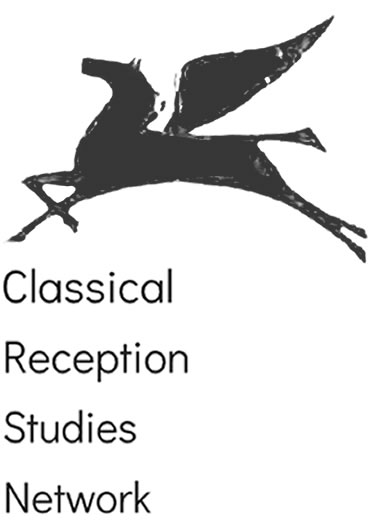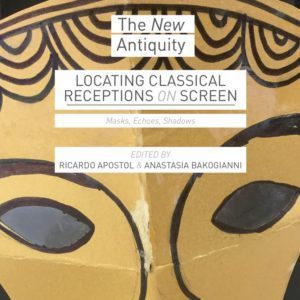by Anastasia Bakogianni (Massey University)
Locating Classical Receptions on Screen: Masks, Echoes, Shadows, ed. R. Apostol and A. Bakogianni, in the New Antiquity series, Palgrave Macmillan (2018), 198 pp.
It is an exciting time for Classical Reception as we continue to test and expand the boundaries of our discipline. That was always the goal of our Masks book project; we deliberately set out to investigate the very processes of classical reception. We chose to focus on screen receptions, as over the years they have become an important test case at the very cutting edge of Classical Reception’s theoretical and methodological debates. Drawing on Adaptation Studies, Comparative Literature and Media Studies we sought to cross-fertilise our investigation, all the better to challenge the concept of fidelity. We wanted to move beyond the traditional approach of measuring source text A against reception text B. But where does this more flexible approach take us? The task we set ourselves was to investigate where the bounds of reception are meant to lie, and thus to conceivably allow for more ‘indirect’/’masked’ instances of ‘reception’ to be included in the fold. It was an eye-opening collaborative journey and each of us of course arrived at our own answers, but we all agreed on the importance of making the attempt. We are convinced that the disciplinary discomfort involved in testing the boundaries of our field is good for us, because it enables us to keep open and engaged with new ideas and methodologies.
The collection is divided into three subsections, designed to have a cumulative effect that allowed us to examine our research questions from multiple angles. In Part I, Beyond Fidelity, Gregory N. Daugherty (Randolph-Macon College) identifies and defends his criteria for selecting indirect cinematic receptions of the Odyssey for discussion, while Tania Evans (Australian National University) and Amanda Potter (The Open University) explore the theme of female sacrifice by juxtaposing Euripides’ Alcestis and Iphigenia at Aulis with two modern landmark television series, Buffy theVampire Slayer (1997-2003) and Game of Thrones (2010-2019). The aim in this first section is to examine what we mean by the term ‘indirect’ receptions, and debate how these are to be identified and interpreted.
In Part II, Beyond Influence, Paula James (The Open University) draws on Media Studies to continue her long-standing investigation of screen appropriations of the story of Pygmalion, focusing on a series of more recent case studies and the myth as a simulacrum onto which we can project contemporary anxieties and desires about artificial life. Michael Williams (University of Southampton) returns to his analysis of the appropriation of the classical past in the construction of modern celebrity from the early days of cinema to the present. Williams analyses how such examples of superficial visual authenticity play on familiar visual tropes and thus uncovers another aspect of how the classical past continues to shape our world through popular media. This section demonstrates the importance of engaging with debates in Film and Media Studies to analyse indirect receptions of diffuse notions (e.g. myth or ancient ideas about beauty) rather than specific classical ‘texts’.
In Part III, Beyond Original, my co-editor Ricardo Apostol (George School) uses the tools of Comparative Literature to juxtapose Horace’s Odes (2.20 and 3.30) and Darren Aronofsky’s film Black Swan (2010). Moving beyond ‘authorial’ intention as a selection criterium, Apostol argues for a bolder approach to practicing Classical Reception, one that highlights the role of the scholar in the selection and juxtaposition of ‘texts’ on the basis of rich thematic links. In the final chapter of our collection, I draw on Adaptation Studies and meme theory to argue for the validity of this type of connection. I argue that the modern popular understanding of the tragic hero Ajax as suffering from war trauma can be a helpful tool for testing the current state of our relationship with the classics. Rather than simply dismissing this interpretation as anachronistic we can use it to forge new links between the epic and tragic versions of the hero and recent war movies. We can thus engage with modern debates about the impact of recent conflicts on soldiers and their families and reflect on the key role that classical texts have historically played in how warfare and its impact have been conceptualised; plus once a connection is made it cannot be unmade.
Our collection testifies to the continuing popularity and longevity of classical texts, myths and history, as well as narratives, characters and visual tropes in the mediums of cinema, television and other digital media. But it is our sincerest hope that our work also demonstrates that embracing ‘masked’ receptions is not only incredibly rewarding, but more importantly that it allows us, as scholars of classical reception, to take an active role in aiding Classics to go viral.

